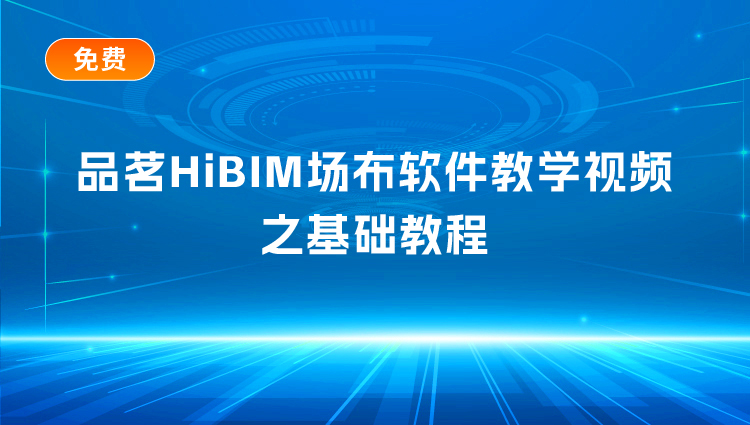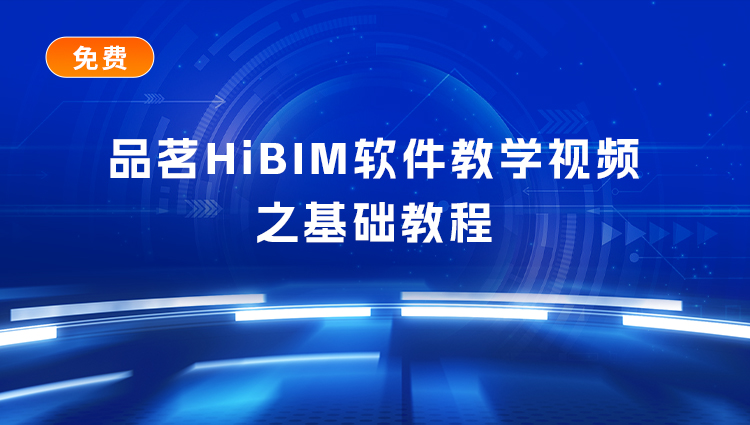* 主体类型
* 企业名称
* 信用代码
* 所在行业
* 企业规模
* 所在职位
* 姓名
* 所在行业
* 学历
* 工作性质
请先选择行业
您还可以选择以下福利:
行业福利,领完即止!

下载app免费领取会员



随着疫情的突袭及城市化进程的加速发展,人们对环境要求更加多元和动态,对工作和办公场所的认知也更为灵活与自由。于此,空间的复合型功能、办公场所的亲自然性与“无界化”,与是否涵盖公共精神与社会艺术内核逐渐成为当今时代的新命题。
共享西溪湿地的生态自然,坐拥商务科技的优渥土壤,云澜谷提炼出在建筑界面的包裹下亲近自然的内核,以“无界渗透”为空间设计主旨,将自然、植物、木材、泥土、石材等元素,通过“表皮重塑”、“垂直渗透”的方式植入建筑内部,创新艺术装置和社交氛围,缝合连接起“大堂”、“中庭”等公共空间,创造更多“室内的风景”,营造而成极具“艺术、自然、生活与工作”的无界“云谷”。
With the outbreak of the epidemic and the accelerated development of urbanization, people's environmental requirements are more perse and dynamic, and their cognition of work and office places is more flexible and free. Here, the complex function of space, the naturalness and "borderless" of office space, and whether to cover the public spirit and the core of social art have gradually become the new propositions of today's times.
Sharing the ecological nature of Xixi Wetland and rich soil of business science and technology, Yunlan Valley extracts the core that is close to nature under the packaging of the architectural interface. With "borderless penetration" as the theme of space design, nature, plants, wood, soil, stone and other elements are implanted into the interior of the building through "skin remodeling" and "vertical penetration" to innovate art installations and social atmosphere. The "lobby", "atrium" and other public Spaces are stitched together to create more "indoor scenery" and create a boundless "cloud valley" with "art, nature, life and work".


壹、立面重塑
First,facade remodeling


在云澜谷室内空间中我们借用自然光、生态与科技,重塑建筑“内表皮”。
项目以大尺度内向与立体花园形式,在入口大堂与幕墙、窗体之间重塑“巴埃萨的对角极致”,光影入口,明亮简洁的横向纹理线条指引空间视线,完成引导指示性功能。
In the interior space of Yunlan Valley, we use natural light, ecology and technology to reshape the "inner skin" of the building.
In the form of a large-scale inward and three-dimensional garden, the project recreates the "diagonal extreme of Baesa" between the entrance lobby and the curtain wall and forms. The light and shadow entrance, bright and simple horizontal texture lines guide the space line of sight, and complete the guiding and indicative function.


四周墙面与顶底面延续线条语素贯穿整体界面,墙体对缝连通幕墙、层板、灯光高度,并将照明、空调整合到一条设备带中,形成干净、延续的视觉效果。丰富的光影变化与统一的材料模数形成强烈的对比,流光与体块相叠,秩序与律动相辅,让空间充满探索趣味。
The surrounding wall and the top and bottom surface continue the line morpheme through the overall interface, the wall seam connects the curtain wall, the laminate, the lighting height, and integrates the lighting and air conditioning into an equipment belt, forming a clean and continuous visual effect. Rich light and shadow changes and unified material modulus form a strong contrast, streamer and volume overlap, order and rhythm complement, so that the space is full of exploration interest.


贰、垂直渗透
Second, vertical penetration
我们对统一界面的语言进行延伸,整体中庭空间以自然意趣,艺术渗透的理念贯彻到建筑、形体和可塑的空间体量中,以求“由内而外”和“由外及内”。
We extend the language of the unified interface, and the concept of natural interest and artistic penetration of the overall atrium space is implemented into the architecture, form and plastic space volume, in order to "from the inside out" and "from the outside to the inside".



正如越来越多的项目注重创造“多重地表”的概念,我们在中庭空间以体块与方形几何架构“垂直渗透”,以扩大人与自然的接触表面积,延长在自然中的停留时间,创造层次丰富的亲自然体验。
Just as more and more projects focus on creating the concept of "multiple surfaces", we use volume and square geometric structures to "vertically penetrate" the atrium space to expand the contact surface area between people and nature, extend the time spent in nature, and create a rich and pro-nature experience.


叁、室内风景
Third, indoor scenery
人与自然的关系已从“驯化自然”转变为“与自然协作”,我们从室内设计出发,结合本土植物,构造极具有视觉特色的办公景观。
The relationship between man and nature has changed from "domestication of nature" to "collaboration with nature". We start from interior design and combine native plants to construct a highly visual office landscape.

室内通过规划和设计创造更多“看得到风景的房间”,将自然带入建筑内部。
利用大堂、中庭、植物的衔接围合,植入年轮纹理的科技木皮、契合地泥土色的座椅,通过科技处理展现出大面金属质感,以及墙面石材与地面花岗岩的丰富纹理,唤起办公人群对自然的感知,缓解工作紧绷的神经,身处其中,沉浸式感受自然的声音与气味。
我们想构建的,并不是固定的某种空间结构或形式,而是让人们在沉浸式工作的同时,也能于无形中强化对自然的认知,让生活与工作达到深层次融合。
The interior brings nature into the building through planning and design to create more "rooms with views".
By using the connection between the lobby, atrium and plants, the technological wood bark with the grain of annual rings and the seats with the appropriate earthy color are implanted. Through technological treatment, the metal texture of the large surface is displayed, and the rich texture of the stone on the wall and the granite on the ground is displayed. This arouses the perception of the office crowd on nature, alleviates the nervous tension of work, and immerse yourself in the sound and smell of nature.
What we want to build is not a fixed spatial structure or form, but to enable people to unconsciously strengthen their cognition of nature while immersed in work, so that life and work can achieve a deep integration.



肆、公共磁场
Fourth, the public magnetic field
在实现公共共享价值之前,我们着手建立场地引力,打破场地内外之间的对立面,注重创造具有吸引力、能激发创意和潜能,促进人际交往和互动丰富的室内空间,将人带回具有“公共磁极”的地表。
Before realizing the public shared value, we set out to establish the attraction of the site, break the opposites between the inside and outside of the site, and focus on creating attractive interior Spaces that stimulate creativity and potential, promote interpersonal communication and interaction, and bring people back to the surface with a "public magnetic pole".

犹如柯布西耶在斯图加特(Stuttgart)的设计,云澜谷既具有严整的建筑外框架,又具有自由的室内使用空间。
除了75%的固定室内空间,另外25%的“X空间”将充分展现其灵活性,承担促进人际交往和互动的职责。在中庭及走廊营造适宜尺度的停留空间,满足不同人数的非办公室讨论与临时办公场景,“邻里”特质将人在空间里聚集起来,中庭变为了一个“广场”,平衡了场所的私密和社交属性。
Like Le Corbusier's design in Stuttgart, the Lancer Valley has both a rigid exterior framework and a free interior use space.
In addition to 75 percent of the fixed interior space, the other 25 percent of the "X-space" will be fully flexible and take on the responsibility of promoting human interaction and interaction. In the atrium and corridor, a stay space of appropriate scale is created to meet the non-office discussion and temporary office scenes of different numbers of people. The "neighborhood" quality brings people together in the space, and the atrium becomes a "square", balancing the private and social attributes of the place.


同时我们也在“X空间”设计里,注入了更多细节功能的考量,留足了方便办公人群停留的植物、吧台、座位、照明和电源;走廊扶手亦设置成“可以放置一杯咖啡”的宽度。
在“无用”的长条形空间内,具备运营属性的“盒子”通过插件方式在关键触点上起到作用,丰富室内业态与空间属性,有效提升人在空间中的停留意愿与幸福感。
At the same time, we also injected more detailed functional considerations into the design of "X space", leaving enough plants, counters, seats, lighting and power supplies for office people to stay. The handrail of the corridor is also set to the width of "can place a cup of coffee".
In the "useless" long space, the "box" with operational properties plays a role on the key contact points by means of plug-ins, enriching the indoor format and spatial attributes, and effectively improving people's willingness to stay in the space and happiness.

在这里人们可以偶尔逃离办公状态,喝杯咖啡,看看绿色植物,远眺窗外世界,不仅能够提高工作效率,更能增强工作愉悦度,创造出一个放松、分享、交互的高效公共空间。
Here, people can occasionally escape the office state, drink a cup of coffee, look at the green plants, and overlook the world outside the window, which can not only improve work efficiency, but also enhance work pleasure, and create an efficient public space for relaxation, sharing, and interaction.

△ 主要材质 / Main material
项目名称丨西投绿城 · 杭州云澜谷
项目类型丨商务办公园区
项目业主丨绿城中国/西湖投资
业主团队丨叶恒、钟妍、余冰、李伟、陈利、冯梦雅、吕俊、郑枭
项目地点丨浙江杭州
设计竣工丨2023.07
设计面积丨约15570㎡
室内设计丨ZSD卓时
总设计师丨袁廓(笑雨)
室内团队丨王薇薇、曾斌、付绅、杨世轶、楼萧、董学鹏、李超
项目摄影丨XF Photography
Project name: Xitou Green City · Hangzhou Yunlan Valley
Project Type: Business Office Park
Project owner :Greentown China/West Lake Investment
Owner Team: Ye Heng, Zhong Yan, Yu Bing, Li Wei, Chen Li, Feng Mengya, Lu Jun, Zheng Xiao
Project location: Hangzhou, Zhejiang
Design completed:2023.07
Gross built area: 15570㎡
Interior Design:ZSD
Chief Designer :Yuan Kuo
Indoor Team: Wang Weiwei, Zeng Bin, Fu Shen, Yang Shiyi, Lou Xiao, Dong Xuepeng, Li Chao
Project Photography: XF Photography
来源:本文由ZSD卓时提供稿件,所有著作权归属ZSD卓时所有。
本文版权归腿腿教学网及原创作者所有,未经授权,谢绝转载。

上一篇:建筑赏析|从神秘棕榈纤维到璀璨绿石英,探索巴西渔村的钢铁棕榈宫殿
- 建筑赏析|谧境幽蓝盎然新生|上海绿城·春晓园
- 建筑赏析|逃离都市喧嚣,把别墅打造成婚礼、派对、度假的私密空间
- BIM建筑|绍兴天地:芯片厂变身城市商业客厅 / Kokaistudios + AICO
- 建筑赏析|泳池也疯狂!里斯本Tejo环形泳池引领水上新风尚
- 建筑赏析|广州畿·云瑶度假酒店:line+在大湾区山谷间,重塑野奢栖居理想地
- BIM建筑|P.art Group画廊空间 / 超级理想建筑工作室
- BIM建筑|SUPAW HUB:“小镇”里的休闲市集 / Pure & Wild Studio 朴野设计
- BIM建筑|朔特拉艺术展览中心 / Ho Khue Architects
- BIM建筑|义乌宗泽36班幼儿园 / 九米设计
- BIM建筑|NAN+和作新作:南京南部新城步行桥和车行桥







































